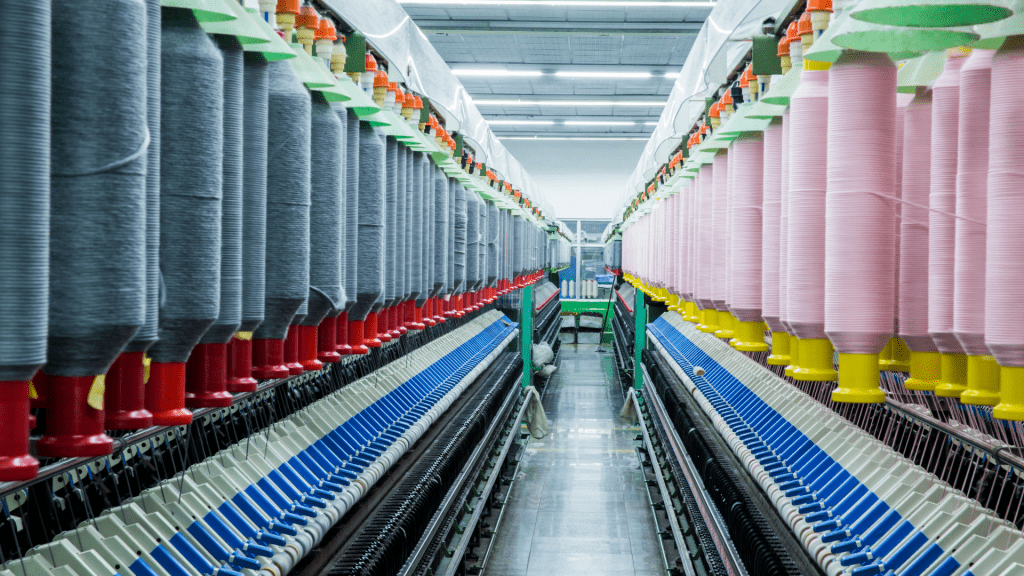The Indian textile industry, one of the oldest and most vibrant sectors in the country, has woven itself into the fabric of the nation’s economic growth story. With a rich heritage that dates back centuries, this industry continues to thrive as a global leader, employing millions and contributing significantly to India’s GDP and export revenue. Recognizing the textile industry’s vital role in India’s economy, the GOI has prepared a roadmap to take the sector’s market size to USD 350 billion from around USD 165 billion at present, creating 4.5 to 6 crore jobs. As global demand surges for sustainable and quality textiles, India is poised to strengthen its position as a powerhouse, blending tradition with innovation to drive forward in an evolving marketplace
This week, “The People Weekly” will explore India’s textile sector—its production power, global influence, and growth trajectory. As a trusted partner in the recruitment industry, PeopleLogic, one of the top recruitment firms in India, presents this informative piece on the Indian textile industry. We aim to educate our valued readers, keeping you informed and helping you stay ahead of the curve.
Growth of the Indian Textile Industry: Domestic and Export
India stands as a powerhouse in the textile industry, producing vast quantities of cotton, jute, and silk, with 95% of the world’s handwoven fabric originating here. Its textile and apparel sector directly employs 45 million people, with 100 million in related industries, making it the nation’s second-largest employer. The domestic apparel & textile industry in India contributes approx. 2.3 % to the country’s GDP, 13% to industrial production and 12% to exports. India has a 4% share of the global trade in textiles and apparel.
Currently, textile exports are at $34.43 billion, with ambitious projections to reach $100 billion by 2030. The domestic sector contributes 2% to India’s GDP and 10.5% of its export basket. India’s rapid rise as a global PPE manufacturer further solidifies its position, with over 600 certified companies.
On the export front, India is among the world’s leading textile exporters, with products ranging from traditional garments to high-tech fabrics. India’s textile export industry is a well-established, dynamic, and contemporary business. What a beautiful tapestry. It is projected that India’s overall textile exports will reach $65 billion by FY26 and grow at a 10% CAGR from 2019 to $190 billion in 2026.

Present and Projected Market Size
India’s textiles and apparel industry is on a remarkable growth trajectory, anticipated to expand at a 10% CAGR to hit $350 billion by 2030. The country, already the world’s third-largest exporter, ranks in the top five for various textile categories and aims to boost exports to $100 billion. Contributing 2.3% to GDP, with projections to reach 5% by decade’s end, this sector significantly impacts industrial production (13%) and exports (12%).
Despite pandemic disruptions, the industry is recovering, with a manufacturing index of 106 as of June 2024. India’s home textiles market alone is set to nearly double by 2032, while the technical textiles sector, particularly medical and sportech segments, continues its rapid expansion. Furthermore, India, the leading cotton producer globally, expects cotton production to reach 7.2 million tonnes by 2030. With a growing focus on natural fibers, the industry is positioned for sustained global prominence, supported by robust demand across international markets.
Growth Drivers
Several factors contribute to the Indian textile industry’s remarkable growth. Key drivers include:
Government Support: Initiatives like the Production Linked Incentive (PLI) Scheme, the launch of the National Textile Policy 2024, and schemes such as the Mega Integrated Textile Region and Apparel (MITRA) have been crucial. The government’s focus on improving logistics, modernizing technology, and enhancing ease of doing business further boosts the sector.
Increasing Demand for Sustainable Fashion: The push toward eco-friendly and sustainable textiles has increased the demand for organic fabrics, recycled fibers, and natural dyes. India’s abundance of organic raw materials positions it well to cater to this demand.
Rising Global Preference for Indian Textiles: India’s vast array of traditional and contemporary textiles appeals to global markets. The demand for quality products with unique designs has boosted exports, with traditional textiles like silk and handlooms maintaining a strong international presence.
Technological Advancements: The integration of technology in production, from high-tech machinery to AI-driven inventory management systems, has improved efficiency. These advancements, supported by government grants and private investment, have enabled large-scale production at reduced costs.
Major Players in the Industry
The Indian textile industry is a mix of large-scale corporations, small to medium-sized enterprises, and artisans. Some of the major players include:
Raymond Ltd
Arvind Limited
Welspun India Ltd
Aditya Birla Group
Reliance Industries
The global textile industry is dominated by major players known for their innovation, scale, and quality. Some of the top names include:
Inditex
LVMH Moët Hennessy Louis Vuitton
VF Corporation
Toray Industries
Nike Inc.
Each of these companies invests in innovative production methods and follows sustainable practices to meet the evolving global demand for environmentally-friendly textiles.
Current Trends
The Indian textile industry is adapting to emerging global trends that reshape its operations and influence market dynamics:
Sustainable Practices and Eco-Friendly Materials: With eco-conscious consumers leading the charge, the textile industry is increasingly embracing organic fibers, biodegradable materials, and ethical sourcing. Many companies are now committed to sustainable practices, aligning their operations with the worldwide push for environmental responsibility and a greener future.
Increased Digitalization: Digital platforms for inventory management, automated production, and data-driven decision-making are transforming the industry. These advancements enhance operational efficiency, reduce production costs, and provide transparency, which is increasingly appreciated by global buyers.
Expansion of E-Commerce: The emergence of e-commerce platforms has empowered smaller brands to connect with broader audiences. The pandemic further accelerated this shift, prompting companies to prioritize online channels to enhance accessibility to both international and domestic markets. This evolution has transformed the retail landscape, enabling diverse brands to thrive in the digital marketplace.
Focus on Technical Textiles: As the global market for technical textiles experiences rapid expansion, India is enhancing its capacity to produce functional fabrics. The government is actively supporting this sector with incentives designed to position India as a significant contender in this high-growth industry.
Indian Textile Industry and Job Creation
The textile industry in India stands out as the sole sector that offers substantial employment opportunities for both skilled and unskilled laborers. This makes a great contribution to employment generation, next only to the Indian retail industry, which accounts for more than 10 per cent of the country’s GDP and approximately 8 per cent of the total employment in India.
The sector directly employs more than 45 million individuals and supports an additional 60 million in allied industries, including women and rural communities.With 7 PM Mitra parks sanctioned across the country, it is expected that these parks will generate 1 Lakh direct and 2 lakh indirect employment.
Technology plays a pivotal role in the Indian textile industry, driving efficiency and innovation across various segments. Advanced machinery, automation, and digital solutions enhance production processes, ensuring high-quality output and reducing turnaround times. Additionally, technologies such as artificial intelligence and data analytics enable better market forecasting and inventory management.
In terms of hiring, the industry increasingly seeks skilled professionals with expertise in textile engineering, design, and information technology. This shift towards modernization necessitates a workforce that is adaptable and proficient in leveraging technology to meet the demands of a rapidly evolving market landscape.
PeopleLogic Opinion
The Indian textile industry transcends its role as a mere provider of clothing and home fabrics; it stands as a formidable economic powerhouse with a bright future ahead. With robust government support, the adoption of advanced technologies, and alignment with global sustainability trends, the industry is transforming to cater to the evolving preferences of modern consumers. This evolution is expected to drive significant growth in both domestic and export markets, enhancing India’s economic landscape and elevating its status in the global textile arena.
Leveraging years of successful recruiting in textiles, PeopleLogic understands the unique skill sets and competencies required for various roles, from production and quality assurance to design and innovation. Our team’s insight into industry demands, combined with a vast network of qualified professionals, allows us to connect clients with candidates who not only meet technical requirements but also align with the company’s culture and values. This expertise ensures that PeopleLogic remains a trusted partner for textile companies seeking top-tier talent to drive growth and innovation.






